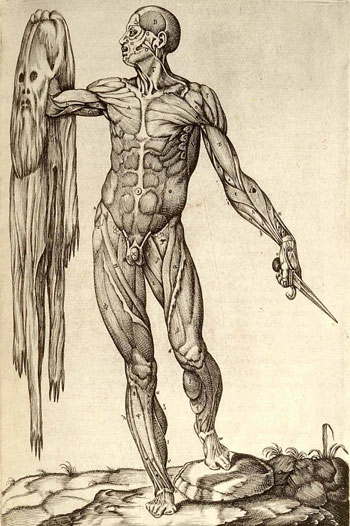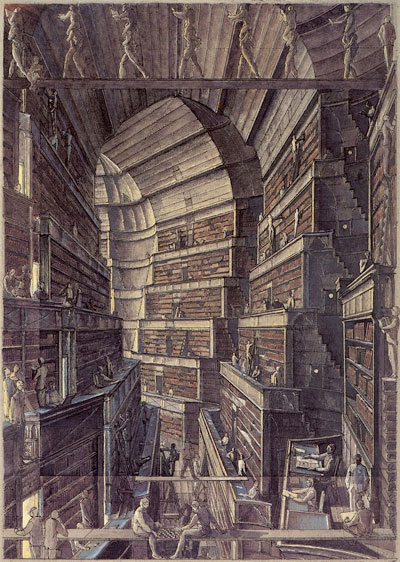Anatomy
It’s easy to get lost in the Library of Babel — in part, this is by design. I’ll do my best here to orient new users, and help them make use of its resources.
The universe (which others call the Library) is composed of an indefinite, perhaps infinite number of hexagonal galleries…The arrangement of the galleries is always the same: Twenty bookshelves, five to each side, line four of the hexagon's six sides…each bookshelf holds thirty-two books identical in format; each book contains four hundred ten pages; each page, forty lines; each line, approximately eighty black letters
With these words, Borges has set the rule for the universe en abyme contained on our site. Each book has been assigned its particular hexagon, wall, shelf, and volume code. The somewhat cryptic strings of characters you’ll see on the book and browse pages identify these locations. For example, jeb0110jlb-w2-s4-v16 means the book you are reading is the 16th volume (v16) on the fourth shelf (s4) of the second wall (w2) of hexagon jeb0110jlb. Consider it the Library of Babel's equivalent of the Dewey Decimal system.

The hexagon names contain letters and numbers. This makes them in effect a base-36 system for identifying unique locations in the library. Nonetheless, hexagon names still commonly stretch to more than 3200 characters. (For reasons I do not fully understand, but which I believe to be merely statistical, books found by searching almost always contain hexagon names of 3254 characters.) Because of their length, it's not possible for all browsers to access them using what’s known as a GET request. The only effect this should have for users is that books in hexagons with names of greater than 1950 characters can only be bookmarked by using the “bookmarkable” link on the book pages. It allows you to create a custom url for pages and share them as links or bookmark them. Otherwise, the only way to recover a book you have checked out in the past is to copy down its hexagon-wall-shelf-volume identifier and page number. These can be entered in the browse page to access any book by its location.
One caveat: because of their length, hexagon names often appear in truncated form on the site. In order to obtain the full hexagon name, either download the book (its location will be printed at the end of the text document) or follow the book location link to the browse page. Both of these links can be found in the navigation bar of any book you access. The first link in that list is an abbreviated version of the book location, and allows you to browse the shelf containing the book you are currently reading. The browse page will contain the full hexagon name in a copy-pastable form in its text area.
The library offers three methods for checking out books: browse, search, and random. What follows are ideas for the daunting task of entering its hexagons.
Open a Book at Random...
- And listen to it with a screen reader
- And invent the language in which it is grammatically correct
- Invent a code in which its letters are somewhat more meaningful (e.g. take every second or third letter, or the letter following or previous in the alphabet, etc.)
- Practice gematria
- Anglishize!
Browse...
- The hexagon with your initials
- The hexagons with your lucky number
- Just to read the titles
- Take a page of text from somewhere in the library, and enter it as the name of a hexagon. (spaces, commas, and periods will be removed automatically)

Search...
- For your name
- For a date in the future
- For a date in the past
- For a passage from your favorite book, or something you yourself have written. Search for alternate scenes and endings.
- If you have writer’s block, search for the last word or sentence fragment you've written, and find out how it ends.
- -
- Those who tire of being constantly thwarted looking for meaning among the library’s babble can use reading its jumbled texts as a form of meditation. Eventually your mind learns no longer to search for or expect significance.